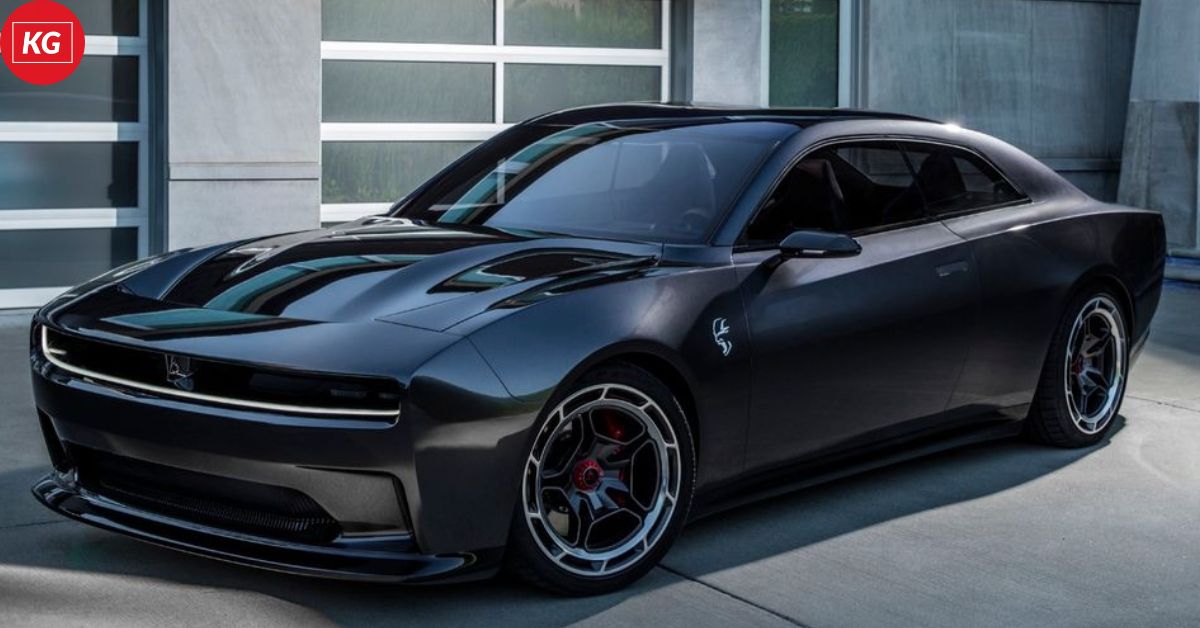Bold promise, sudden silence. That’s the story of the Dodge Charger Banshee—a high-performance, all-electric muscle car that was supposed to redefine American horsepower for the EV era. With a projected output of 900 horsepower and an 800-volt architecture, the Banshee was Dodge’s answer to the future of electrified performance. But as of late 2025, it appears the Banshee may never see the light of day.
The Rise of the Banshee: Dodge’s Electrified Dream
Back in 2022, Dodge unveiled the Charger Daytona SRT concept, a sleek, aggressive electric coupe that promised to carry the brand’s muscle car legacy into the EV age. Among the trims teased was the Banshee, a top-tier variant designed to replace the Hellcat as Dodge’s new performance king.
Unlike the R/T and Scat Pack trims, which used a 400-volt dual-motor setup producing up to 670 hp, the Banshee was slated to feature an 800-volt electrical system. This would not only boost performance to 900 hp or more, but also enable faster charging times, improved thermal efficiency, and better overall range.
Dodge’s marketing positioned the Banshee as a “no-compromise” electric muscle car—one that could smoke tires, roar with synthetic exhaust notes, and still deliver the instant torque and clean energy of an EV.
What Made the Banshee Special?
The Banshee wasn’t just about raw power. It was supposed to be a technological leap for Dodge, offering:
- 800-volt architecture: Faster charging and higher performance
- Dual-motor AWD setup: For better traction and acceleration
- Fratzonic Chambered Exhaust: A synthetic sound system to mimic the roar of a V8
- Retro-modern styling: Inspired by classic Chargers, but with futuristic lines
- Performance-focused interior: With a fighter-jet-inspired cockpit and digital displays
In short, the Banshee was Dodge’s attempt to prove that electric cars could still be loud, proud, and unapologetically American.
The Sudden Shift: Stellantis Reassesses Its EV Strategy
Fast forward to October 2025, and the future of the Banshee looks grim. According to multiple reports, including Mopar Insiders and Motor1, Stellantis—the parent company of Dodge—has quietly shelved the Banshee project.
The reason? A major shift in corporate strategy. Since the appointment of new CEO Antonio Filosa, Stellantis has been scaling back its aggressive EV plans. Projects like the Ram 1500 REV and Jeep Gladiator PHEV have already been canceled. Now, the Banshee appears to be the latest casualty.
Sources suggest that the cost of developing a standalone 800-volt platform for a niche performance EV was too high, especially given the uncertain demand and slow rollout of charging infrastructure. Dodge has already dropped the R/T trim of the Charger Daytona, leaving only the Scat Pack. The Banshee, once the crown jewel, may never reach production.
Why It Matters: The End of an Era?
The cancellation of the Banshee isn’t just about one car—it’s symbolic. Dodge was one of the few legacy brands trying to inject personality into EVs. The Banshee promised a visceral experience, not just silent speed. Its demise suggests that the muscle car identity may not translate easily into the electric age.
It also raises questions about the future of high-performance EVs. While brands like Porsche, Lucid, and Tesla continue to push boundaries, Dodge’s retreat signals a possible return to internal combustion for its top-tier models. In fact, the company is already reviving its Sixpack gas-powered Charger variant, suggesting a pivot back to traditional powertrains.
What’s Next for Dodge?
While the Banshee may be dead, Dodge isn’t abandoning electrification entirely. The Charger Daytona EV still exists in lower trims, and Stellantis continues to develop hybrid and plug-in models across its portfolio. But the dream of a 900-hp electric muscle car—complete with tire-shredding torque and Hellcat-level theatrics—seems to be fading.
There’s still hope that Dodge could revisit the Banshee concept in the future, perhaps with better battery tech or a more cost-effective platform. But for now, enthusiasts will have to settle for the Scat Pack EV or wait for the next generation of gas-powered beasts.
Final Thoughts
The Dodge Charger Banshee was a bold vision—a 900-hp electric muscle car that dared to challenge the norms of EV design. Its cancellation marks a turning point in the industry, where practicality and cost are overtaking passion and performance. For fans of American muscle, it’s a bittersweet moment. The Banshee may be silenced, but its howl will echo in the hearts of enthusiasts for years to come.



